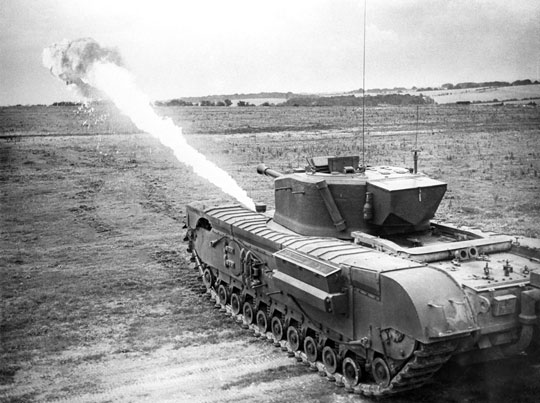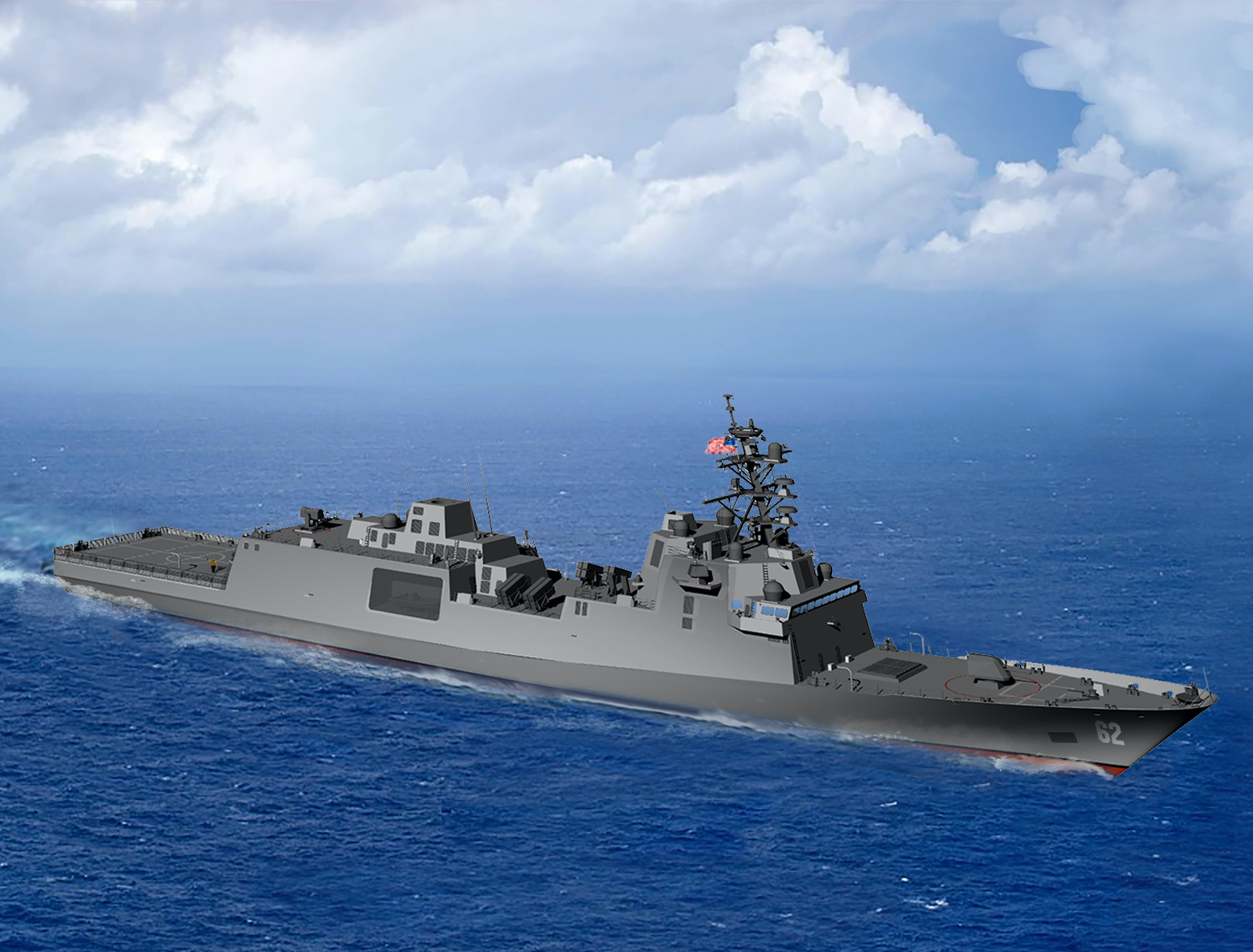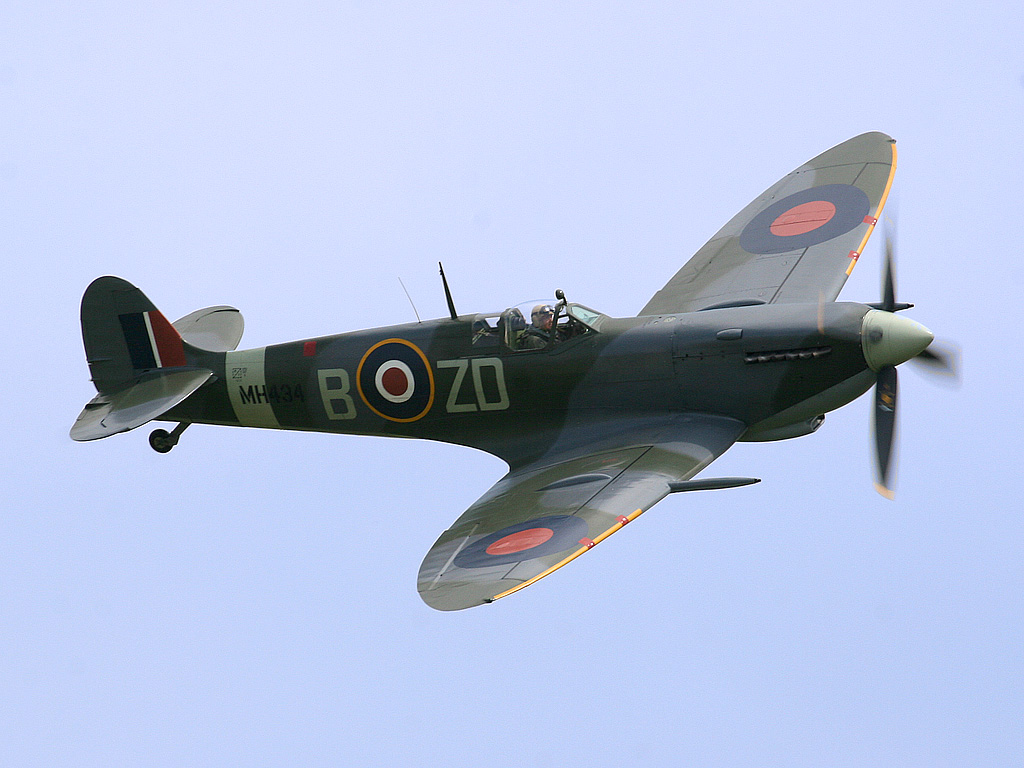
Second Battle of Caen: July 1944

Cromwell of the 7th Army Division. desert rats; the first day of operation of Goodwood, July 18, 1944. The problem with machines of this type was, among other things, that their angular silhouette resembled German tanks, which caused fatal errors.
After almost a month of fighting in Normandy, Caen was still the center of attraction for both sides. Defending the Allied exit to the plain southeast of the city, the Germans had gathered most of the armored divisions on this sector of the front.
On the last day of June 1944, General Montgomery, commander of the 21st Army Group, completed Operation Epsom. Wedged into the German defense line west of Caen, he drew both SS Panzer Corps into battle. On the east side of the wedge, the British enemy was the 12th SS Panzer Corps, Obergruppenführer Dietrich, at that time made up of the bled-out but still fighting 1st SS Panzer Division. "Hitler Youth" and a regiment of tank grenadiers (SS-Pz.Gren.Rgt 1), which was the vanguard heading to the front in Caen 9. SS-Pz.Div. "Leibstandarte". From the south and west, the British attack was held back by II. SS-Pz.Korps Gruppenführer Bittrich as part of the 10th SS-Pz.Div. "Hohenstaufen" and the 2nd SS Panzer Division. "Frundsberg", to which Kampfgruppe Weidinger are two reinforced grenadier battalions of the XNUMXth SS Panzer Division. "Das Reich". Now these forces were trying to regain lost ground.
This development was just as Montgomery had envisioned. From the beginning, his plan for the Normandy campaign was to tie up Rommel's armored reserve at Caen until the Americans were ready to launch an attack from their western sector and in a wide arc from the rear. It was, however, the notorious game with fire, because the Germans did not limit themselves to static defense. Montgomery instructed the Anglo-Canadian 2nd Army to continue their efforts to capture Caen and apply maximum pressure to stop the enemy forces. At the same time, we had to see to it that our eastern flank remained stable. The enemy now had very large forces in the Caen sector and could use them to repel a massive attack. Therefore, it was extremely important for the general plan of action that the 2nd Army did not throw us off balance by some kind of stumbling.

Churchill Crocodile, armed with a flamethrower, terrified the German infantry.
What is usually presented in the literature as a series of unsuccessful attempts to capture Caen was in fact a risky game with the armored elite of the Third Reich. Lieutenant General Dempsey, commander of the 2nd Army, was criticized for his hasty retreat from the strategically located Hill 112 and the withdrawal of tanks to the north bank of the Odon River. The events of July 1 showed, however, how real was the danger that the Germans would destroy the bridgehead beyond the Odon, captured as a result of Operation Epsom, with a strong counterattack. At dawn, the 9th SS Panzer Division. The Hohenstaufen and Battle Group Weidinger attacked on the north bank of the river in an attempt to recapture Rore. The fighting continued all day. The 49th "West Riding" Infantry Division, known as the "Polar Bears", resisted because of the polar bear in the unit's insignia. Ultimately, the German attack failed due to artillery fire. At noon, Obersturmbannführer Otto Meyer, commander of SS-Pz.Rgt. 9 (armored regiment of the division "Hohenstaufen"), he concluded his operational report to the headquarters with a quote from Dante: Abandon all hope who comes here.
The British counter-attack restored the front line to its former course. Churchill Crocodile flamethrowers wounded the grenadiers hiding in the hedgerows, who were then killed by the infantry escorting the tanks. Shortly after the battle, a certain Lord Howe-Hau, who broadcast English-language propaganda on German radio, telephoned the 49th Infantry Division. "Butchers" and announced that from now on, captured soldiers with a polar bear badge would be immediately shot. The Germans kept their word. An officer and two soldiers from the 1st/Tyneside Scots Regiment (1st Battalion Tyneside Scots) who disappeared on patrol a few days later were no doubt executed. Their bodies were found in the basement of the castle of Juvigny.
During the Battle of Rohr, the 10th SS Panzer Division. "Frundsberg" resumed the attack on the bridgehead on the southern bank of the Odon. The Germans briefly occupied the village of Baron, but here they were repulsed by a counterattack and retreated behind Hill 112, being shot down by artillery fire along the way. British patrols reported that about 300-400 SS men died on the northern slope. Both sides suffered heavy losses that day (1 soldier died in the 132nd/Tyneside Scots), but for the Germans they were especially heavy. Kampfgruppe Weidinger, having lost 642 soldiers, including 108 killed, was withdrawn from the fighting for Caen and sent back to her home division ("Das Reich"). One of the regiments of the Hohenstaufen division (SS-Pz.Gren.Rgt. 20) on July 1 was reduced by 328 grenadiers, including 51 killed. The entire division, from the moment they entered the battle on June 29 until the evening of July 2, recorded the loss of as many as 1145 soldiers and 16 Panthers, 10 PzKpfw IVs and XNUMX StuGs.
This was the price of German "defensive successes". The Germans no longer had any illusions about who was winning this devastating battle. Von Schweppenburg, commander of Panzer Group West, demanded that the armored divisions be withdrawn from the range of naval artillery.
He was supported by von Rundstedt, commander-in-chief of the German army in Western Europe. Hitler immediately fired both. Then Rommel (commander of Army Group B, Montgomery's colleague on the other side) quipped - as it turned out prophetically - I was next on the list.
it's called carpet
Assessing the situation in the first days of July, Montgomery said: the battlefield in Normandy was already taking on the shape necessary to break through the front on the western flank. I had hoped to start this operation on July 3rd, but developments in the situation showed that these assumptions were too optimistic. In fact, the breakthrough came only on July 25. Of course, the delays on the western flank had a direct impact on the actions of the 2nd Army. She needed to put as much pressure on the enemy as possible in order to keep him in the east.
Another target of these offensives was Carpiquet Airport, located in the western suburbs of Caen and the nearby village of the same name. The commander of the Canadian 3rd Infantry Division, which was tasked with this task, assigned one of his infantry brigades, the 8th Infantry Division. It consisted of three battalions: 1st / Royal (from The Queen's Own Rifles of Canada), 1st / North Shores (from North Shore New Brunswick Rgt) and the French-speaking 1st / Chauds (from the regiment Le Régiment de la Chaudiere). . They were commanded by brig. Kenneth Blackader. For the duration of the operation, an additional infantry battalion - the 1st / Winnipeg (from the Royal Winnipeg Fusiliers, part of the 7th Infantry Regiment) - and three companies of the Ottawa Cameron Highlanders, a divisional "heavy" battalion (heavy Vickers machine guns and mortars) were placed under his command.
Armored support was to be provided by the 10th Armd Rgt (Fort Garry Horse) - one of the Canadian regiments of the 2nd Armd Bde, consisting of three squadrons (about 60 Shermans in total), as well as three squadrons of special tanks (one each from the Churchill AVRE, one Shermans Crab for minesweeping and Churchill Crocodile) from the British 79th Army Division. In addition, 21 field artillery regiments (about 760 guns) were supposed to support the assault on Carpiquet, in addition to the aircraft and ships of the Royal Navy. The starting positions of the Canadians in the village of Marseilles were only 2 km from the target of the operation, code-named "Windsor".
Their opponent was the first battalion of the 26th Panzer Grenadier Regiment of the Hitler Youth Division (I./SS-Pz.Gren.Rgt. 26), or rather, what was left of it after Operation Epsom, i.e. about 150-200 soldiers (instead of 1000). However, the airport was equipped with strong Luftwaffe-built bunkers that provided cover from artillery fire, and a network of concrete channels could serve as trenches. In addition, there was a flat area of the airfield, stretching around, within a radius of 2 km, providing anti-tank guns. and for dug-in tanks, an excellent field of fire. A battery of four 8,8 cm anti-aircraft squadron guns was deployed on the eastern outskirts of the airfield. Hitler Youth. In the southeast corner of the airfield there are five PzKpfw IVs from the 9th company of the division's tank regiment (9./SS-Pz.Rgt. 12). Artillery support, although limited by the lack of ammunition, was provided by III./SS-Pz howitzers, art. 12 and a rocket artillery regiment (Werfer-Rgt. 83) equipped with Nebelwerfer launchers.
The offensive plan was for two battalions, the 1st/North Shores and 1st/Chauds, to attack the village of Carpike and the hangars on the north side of the airport. During this time, the 1st/Winnipeg Division would capture the southern edge of the airport and its hideouts. Each battalion was supported by one Sherman Squadron of the Fort Harry Horse Regiment and one dedicated tank. In the second phase of the operation, 1st/Queens was to pass through the captured Karpike and from there strike at the eastern edge of the airport, where the air traffic control buildings were located.
On the evening of July 3, the airfield was attacked by the battleship HMS Rodney, cruising in the Gulf of Sensky. From a distance of about 24 km, he fired 15 broadside volleys from his nine 410-mm guns. At dawn on July 4, the Canadians went on the attack, following the moving barrage. The 1st / North Shores and 1st / Chauds battalions took the northern part of the airfield and the village, where about 50 Hitler Youth grenadiers were defending, without any problems.
During this time, the 1st/Winnipeg Division suffered heavy losses from mortar and machine gun fire as it approached the hangars on the southern edge through open country. For the purpose of the offensive, even the Churchill-Crocodiles could not dislodge the Germans from the fortifications with their flamethrowers, and the battalion retreated to their original positions. He made a second attempt in the afternoon and this time faced a counterattack. Panthers of the 1st and 2nd / SS-Pz.Rgt. 12 tanks held in reserve in the western suburbs of Caen were destroyed by the accompanying Sherman squadron, which lost six of the 15 tanks. Once again 1st/Winnipeg is back to square one. By the end of the day, the 8th Infantry Regiment controlled the village and the northern part of the airport, while the SS controlled the shelters on the southern edge and the buildings on the east side.
The Canadians lost 377 soldiers (killed, wounded, missing). This battle cost the Germans 155 grenadiers from I./SS-Pz.Gren.Rgt. 26, which has practically ceased to exist. After dark, on the night of July 4-5, SS-Pz.Gren.Rgt, assigned to the Hitler Youth division, entered the battle for Karpike. 1 (motorized rifle regiment of the Leibstandarte division). His second battalion took up positions on the eastern edge of the airfield. At the same time, the third battalion, supported by two Panther companies (1st and 4th / SS-Pz.Rgt. 12), attacked the village of Carpiquet from the north, from the side of Frankville. He lost 118 soldiers (mainly due to the fire of the Nebelwerfer and the artillery that was supposed to support him!) and at dawn retreated behind the Can Baie road.
The halfway success of Operation Windsor caused another wave of irritation in the Allied camp. The situation was too similar to the static trench warfare of 1914-1918, which deeply traumatized British society. An additional criticism was that at that stage the Allied ground forces in France could not do anything to stop the bombardment of England by V-1 rockets fired from the Pas de Calais region. Eisenhower recalled that during one of Churchill's visits during this period, the British Prime Minister expressed his deep disappointment with the situation at Caen.
He then reminded the commander-in-chief that he had the right to dismiss any subordinate he considered unsatisfactory, regardless of rank or nationality. It was a clear allusion to Montgomery, who kept insisting that everything was going its way.
"The British haven't done anything yet"
Eisenhower continued to admonish and encourage the commander of the 21st Army Group, but the number of critics grew. He was joined by General Patton, Montgomery's main rival during the Battle of Sicily, who arrived in Normandy in early July with the headquarters of his 1st Army. On July 3 he wrote in his diary: I dined with Bradley and Montgomery. After dinner we went to the combat tent. There Montgomery went out of his way to explain to us why the British had done nothing so far. They still haven't captured Caen even though that city was their D-Day target.
Montgomery was as disappointed with the Americans as they were with them. As soon as they captured Cherbourg (which happened on June 29), he expected them to quickly break through in their sector. Another week went by and their 1st Army was still stuck in the swamps and hedgerows north of Saint-Lô, where most of the roads ran perpendicular to the line of attack. Still, there were relatively modest armored forces against the Bradley - the 17th SS-Pz.Gren.Div. "Götz von Berlichingen" (tank grenadier division, which included one tank battalion) and the 2nd SS-Pz.Div. "Das Reich". But he attacked on a broad front, indifferent to Montgomery's proposals to attack "in German", in the style of Guderian - he chose somewhere his center of gravity and hit him once and for all.
The Kan clinch, while serving its purpose, Montgomery suggested, was not meant to last that long, and thus became more and more problematic for the British-Canadian forces. Dempsey's second field advance meant that there was not enough room to bring fresh forces into the fight. To make matters worse, intelligence warned that when the German high command finally realized that there would be no second invasion of the Pas-de-Calais, they would begin moving much more forces into Normandy than before. Montgomery knew he needed to strike again somewhere to keep from giving up the initiative. He himself stated: "It is obvious that the enemy was becoming more and more concerned about his western flank, so I was determined to redouble our efforts on the 2nd Army front in order to prevent the transfer of additional armored forces against the Americans.
The goal of the next offensive operation was to capture the northwestern part of Caen, along with the historical center of the city, by pushing the enemy beyond the line of the Orne River into the vast industrial suburbs (Faubourg de Vauxcelles). One gets the impression that Montgomery decided to attack the site only to silence critics who point out that he still hasn't captured Caen. This task was entrusted to the three infantry divisions of the 115th corps of the lieutenant general. Crocker, who together numbered about 000 soldiers.

